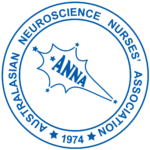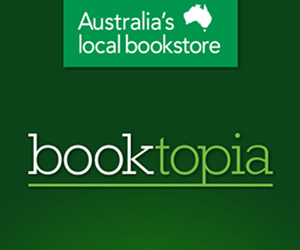| 1968 | Agnes Marshall-Walker, co founder of the American Association of Neurosurgical Nurses, established the World Federation of Neurosurgical Nurses (WFNN). The WFNN is in the unique position of being affiliated with its medical counterpart, the World Federation of Neurosurgical Societies. | |
| 1973 | The first Australians (Tonnie Koenen and Marita Pigden) were admitted as members of the WFNN, and Tonnie Koenen was given the task of establishing a national society of neuroscience nurses in Australia. Tonnie Koenen also served as the WFNN Editor of Publications. | |
| 1974 | On the 4th of May, Tonnie Koenen organised the first meeting of Australasian Neuroscience Nurses in Canberra, during the Neurosurgical Society of Australasia’s annual meeting. 30 nurses from the Australian Capital Territory, New South Wales, Tasmania, Victoria and Western Australia met to formally establish the Australasian Neurosurgical Nurses’ Association. | |
| 1975 | The second meeting of the Australasian Neurosurgical Nurses’ Association saw the Constitution ratified and the Association’s emblem launched. The Association’s membership numbered 42. Emblem: A neuron with the Southern Cross superimposed with the association’s initials inserted inside the neuronal body. Blue background, silver stars, white inscription. | |
| 1977 | The Australasian Neurosurgical Nurses’ Association was formally accepted as a member of the WFNN in OctoberTonnie Koenen, the Association’s founder, stood down as president. She retains the lifelong position of Honorary President. | |
| 1980 | Brainstem, the Association’s first newsletter was launched, with Narelle Glass and Jan Davis serving as Editors. | |
| 1981 | Valda Jones became the first association member to be elected to the WFNN office of Vice President. The resignation of the WFNN President saw the promotion of Valda Jones to that office, the first association member to hold that position. |
|
| 1986 | The first nursing paper was presented at the Neurosurgical Society of Australasia’s meeting in Queenstown, New Zealand. Leandra Ingram presented a paper on “Nursing Diagnosis”. At this meeting, the Society awarded the inaugural NSA Prize for the best nursing paper presented during the Association’s educational programme. The prize was won by Alice Grote, from South Australia. | |
| 1987 | The Association’s name was changed to the Australasian Neuroscience Nurses’ Association. Membership numbered 108. | |
| 1988 | The Australasian Journal of Neuroscience was launched with Veronica Roach as Editor. The first full day Association meeting was conducted preceding the Neurosurgical Society of Australasia’s meeting in Sydney.The inaugural Tonnie Koenen Prize was awarded for the paper judged as making a significant contribution to, or comment on the practice of neuroscience nursing. The prize was awarded to Rhonda Atkinson, Tasmania, and presented by Tonnie Koenen.The Association’s Operational Manual was launched. | |
| 1989 | The Association conducted its first two day annual meeting, including a workshop on “Standards of Neuroscience Nursing Practice”. | |
| 1990 | The Australasian Journal of Neuroscience achieved its first medical index listing on the Australasian Medical Index. Incorporation of the Australasian Neuroscience Nurses’ Association was finalised. Membership numbered 224. | |
| 1994 | 20th Anniversary Meeting Gold Coast, Queensland. | |
| 1997 | Association member Barbara Lester was elected Vice President to the World Federation of Neuroscience Nurses.Association member Vicki Evans was elected Secretary to the World Federation of Neuroscience Nurses. | |
| 1999 | The founder, Tonnie Koenen passed away | |
| 2001 | In September, Australia hosted its first World Federation Neuroscience Nurses Congress in Sydney, NSW, with Barbara Lester and Vicki Evans serving as Scientific Chairs. Association member Rochelle Firth was elected Secretary to the World Federation of Neuroscience Nurses. |
|
| 2003 | Review of the Standards of Neuroscience Nursing was undertaken by the Western Australian branch and accepted at the Annual General Meeting, Queenstown | |
| 2005
2006 2007 2009 2010
2013 2014 |
Vicki Evans association member was elected to the WFNN office as Vice President at the World Congress in Barcelona, Spain.
Establishment of the Barbara Lester Scholarship. Major overhaul of Association website, with the introduction of a webmaster to support the Executive team. ANNA commenced agreement with Association Management Group – PAM’s ANNA Celebrates 35th Anniversary Brainstem, the Association’s newsletter continues to be published, with this being its 30th year of circulation. The Australasian Journal of Neuroscience was re-branded and Vicki Evans took on the role of Editor. Establishment of the Louie Blundell Prize Vicki Evans re-elected as WFNN Vice President. ANNA Professional Standards for Neuroscience Nurses Reviewed ANNA celebrated 40 years Membership sits at 210 including ten Life Members
|
ARCHIVES OF THE AUSTRALASIAN NEUROSCIENCE NURSES’ ASSOCIATION
The archives of the Australasian Neuroscience Nurses Association are currently located in the Nursing History Research Unit at the Faculty of Nursing & Midwifery, University of Sydney, NSW. Inquiries are welcomed from researchers, students and those interested in matters related to the development of the Association or the specialty of neuroscience nursing. Access to the archives can be arranged by appointment. Material of the New South Wales Branch is also held at the unit and is currently being catalogued.
LOCATION: Room C1.02 88 Mallett Street, Camperdown, NSW 2006
CONTACT PERSON: Dr Jennifer Blundell
TELEPHONE: (02) 93510696
Email: jblundel@nursing.usyd.edu.au


